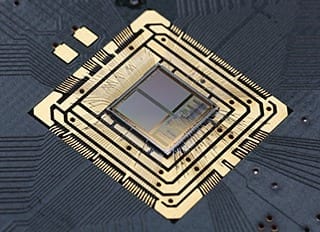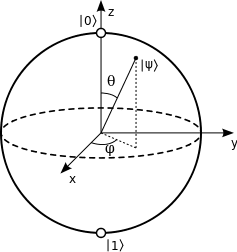
Inspired by nature, scientists from Berlin and Heidelberg use artificial nerve cells to classify different types of data.
A bakery assistant who takes the bread from the shelf just to give it to his boss who then hands it over to the customer? Rather unlikely. Instead, both work at the same time to sell the baked goods.
Similarly, computer programs are more efficient if they process data in parallel rather than to calculate them one after the other. However, most programs that are applied still work in a serial manner.
Scientists from the Freie Universität Berlin, the Bernstein Center Berlin and Heidelberg University have now refined a new technology that is based on parallel data processing. In the so-called neuromophic computing, neurons made of silicon take over the computational work on special computer chips. The neurons are linked together in a similar fashion to the nerve cells in our brain.
If the assembly is fed with data, all silicon neurons work in parallel to solve the problem. The precise nature of their connections determines how the network processes the data. Once properly linked, the neuromorphic network operates almost by itself. The researchers have now designed a network — a neuromorphic “program” — for this chip that solves a fundamental computing problem: It can classify data with different features. It is able to recognize handwritten numbers, or may distinguish certain plant species based on flowering characteristics.
“The design of the network architecture has been inspired by the odor-processing nervous system of insects,” explains Michael Schmuker, lead author of the study. “This system is optimized by nature for a highly parallel processing of the complex chemical world.”
Together with work group leader Martin Nawrot and Thomas Pfeil, Schmuker provided the proof of principle that a neuromorphic chip can solve such a complex task. For their study, the researchers used a chip with silicon neurons, which was developed at the Kirchhoff Institute for Physics of Heidelberg University.
Computer programs that can classify data are employed in various technical devices, such as smart phones. The neuromorphic network chip could also be applied in supercomputers that are built on the model of the human brain to solve very complex tasks.
The Latest on: Artificial Nerve Cells
[google_news title=”” keyword=”Artificial Nerve Cells” num_posts=”10″ blurb_length=”0″ show_thumb=”left”]
via Google News
The Latest on: Artificial Nerve Cells
- How a Controversial Cryonics Procedure Could Finally Make Immortality Possibleon May 1, 2024 at 10:53 am
Futurists, including some medical doctors, are signing up to be decapitated—and then have their brains frozen. But without a body, what will their minds become?
- Nektar to develop NKTR-0165 for MS, autoimmune diseaseson April 29, 2024 at 10:00 pm
Nektar and Biolojic Design worked to develop antibodies that target and activate the TNFR2 receptor, which is on the surface of Treg cells.
- 3D printed surgical implants may support cures for blindness, chronic pain and neurological diseaseson April 29, 2024 at 12:17 pm
Clever bio-inks that sit inside the human body and restore damaged neurons could cure a whole swathe of diseases in the next 20 years: conditions that have baffled scientists and clinicians for ...
- We Just Took A Big Step Closer To A Human Brain-Inspired Computeron April 29, 2024 at 6:13 am
"It represents a crucial advancement toward computers not only capable of mimicking the communication patterns of the human brain but also utilizing the same medium," Kamsma added. "Perhaps this will ...
- Thistle extract accelerates nerve regeneration by up to 29%on April 22, 2024 at 8:49 pm
Nature has again proven effective in treating health conditions, this time nerve injury. According to a new study, a compound found in the blessed thistle plant accelerates the regeneration of damaged ...
- New compound from blessed thistle promotes functional nerve regenerationon April 22, 2024 at 11:34 am
Blessed thistle (Cnicus benedictus) is a plant in the family Asteraceae. For centuries, it has been used as a medicinal herb as an extract or tea, e.g. to aid the digestive system. Researchers have ...
- Groundbreaking AI Method Identifies New Parkinson’s Treatments 10x Fasteron April 21, 2024 at 4:47 pm
Researchers have leveraged artificial intelligence methods to significantly speed up the discovery of treatments for Parkinson’s disease. The researchers, from the University of Cambridge, designed ...
- What robot makers can learn from an octopuson April 21, 2024 at 4:56 am
Researchers show how they were able to create a multi-layer soft structure and an artificial fluidic system to mimic the musculature and mucus structures of biological suckers.
- Nerve Cells in the Human Neocortex Are Wired Differently Than in Miceon April 19, 2024 at 1:24 am
Contrary to previous assumptions, nerve cells in the human neocortex are wired differently than in mice – human neurons communicate in one direction.
- AI speeds up drug design for Parkinson’s ten-foldon April 17, 2024 at 3:11 am
Researchers have used artificial intelligence techniques to massively accelerate the search for Parkinson’s disease treatments.
via Bing News









